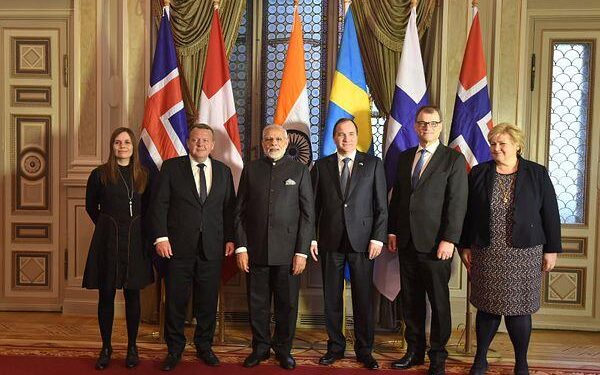Leaders and officials from the Nordic countries gathered this week in a pivotal summit alongside representatives from Greenland and the Faroe Islands, underscoring a renewed commitment to strengthening preparedness cooperation across the High North region. Against the backdrop of escalating geopolitical tensions and the accelerating impacts of climate change, the meeting focused on enhancing joint emergency response capabilities, security coordination, and sustainable development initiatives. This collaborative effort highlights the strategic importance of the Arctic and the shared responsibility of Nordic nations and their autonomous territories to safeguard the region’s stability and resilience.
Nordic Leaders Discuss Strategic Preparedness in Arctic Regions
The recent gathering of Nordic leaders alongside representatives from Greenland and the Faroe Islands marked a pivotal step in enhancing regional security and resource management across the High North. Discussions focused extensively on strengthening joint strategic preparedness to address emerging challenges such as climate change impacts, maritime safety, and increased international activity in Arctic waters. Emphasizing a cooperative approach, officials highlighted the necessity for unified policies that ensure sustainable development while safeguarding local communities and ecosystems.
Key areas of collaboration were outlined, including:
- Integrated emergency response systems tailored to Arctic conditions and remote locations.
- Enhanced information-sharing protocols among Nordic nations and island territories to improve situational awareness.
- Joint training exercises designed to build capacity for search and rescue, environmental disaster response, and infrastructure resilience.
| Preparedness Focus | Lead Participant | 2024 Target |
|---|---|---|
| Arctic Search & Rescue | Norway | Expand coverage by 25% |
| Maritime Safety Framework | Denmark (Faroe Islands) | Implement new protocols |
| Environmental Monitoring Networks | Greenland | Upgrade sensor arrays |
Enhancing Emergency Response and Infrastructure in Greenland and the Faroe Islands
In a bold move to strengthen safety across the Arctic, plans were outlined to upgrade emergency response capabilities throughout Greenland and the Faroe Islands. Key focuses include the modernization of communication networks, enhancement of rapid deployment units, and the establishment of specialized training programs tailored to the unique challenges of the High North. By integrating advanced technologies such as satellite-based tracking and AI-powered risk assessment tools, authorities aim to reduce response times and improve coordination during natural disasters or maritime emergencies.
Collaborative initiatives will also emphasize infrastructure resilience, addressing vulnerabilities in transportation links and emergency shelters. A newly proposed framework highlights investments in:
- Upgraded helipad facilities for remote area access
- Enhanced radio communication systems compatible across Nordic partners
- Development of multi-purpose emergency response centers with sustainable energy
The following table presents a snapshot of planned infrastructure milestones across both territories by 2026:
| Project | Location | Completion Year |
|---|---|---|
| Arctic Communications Hub | Nuuk, Greenland | 2025 |
| Emergency Shelter Network | Tórshavn, Faroe Islands | 2026 |
| Rapid Deployment Training Center | Ilulissat, Greenland | 2025 |
Recommendations for Strengthening Multinational Collaboration and Resource Sharing
To enhance preparedness across the Nordic region, Greenland, and the Faroe Islands, fostering more robust channels for communication and resource exchange is paramount. Establishing dedicated platforms that enable real-time sharing of meteorological data, emergency alerts, and logistical support can significantly reduce response times during crises. Additionally, standardizing protocols and joint training exercises will create a seamless operational environment that bridges geographical and cultural gaps among participating nations. Investment in digital infrastructure and cross-border networks should be prioritized to facilitate these advancements, ensuring that even the most remote areas benefit from timely support.
Moreover, a collaborative framework that encourages pooling of specialized equipment and human expertise is essential to maximize collective readiness. The introduction of a centralized resource registry-a dynamic, shared database-will allow partners to identify and allocate critical assets efficiently. Below is a conceptual overview of key resource categories proposed for joint management:
| Resource Type | Examples | Primary Benefit |
|---|---|---|
| Emergency Equipment | Rescue vessels, medical kits, snowmobiles | Rapid deployment in remote areas |
| Technical Expertise | Arctic survival specialists, meteorologists | Improved situational awareness |
| Information Systems | Satellite data access, communication hubs | Enhanced coordination & data sharing |
Through such strategic sharing, the entire region strengthens its resilience, ensuring that no partner faces challenges in isolation but benefits from a united front in safeguarding the High North.
Concluding Remarks
As the Nordic Summit with Greenland and the Faroe Islands concludes, the commitment to enhancing preparedness cooperation in the High North stands as a clear takeaway. With shared challenges ranging from climate change to security concerns, the reinforced partnerships underscore the region’s strategic importance on the global stage. Continued collaboration among these Arctic nations will be essential in addressing future risks and safeguarding the environmental and geopolitical stability of the North. High North News will keep monitoring developments as these cooperative efforts unfold.
















